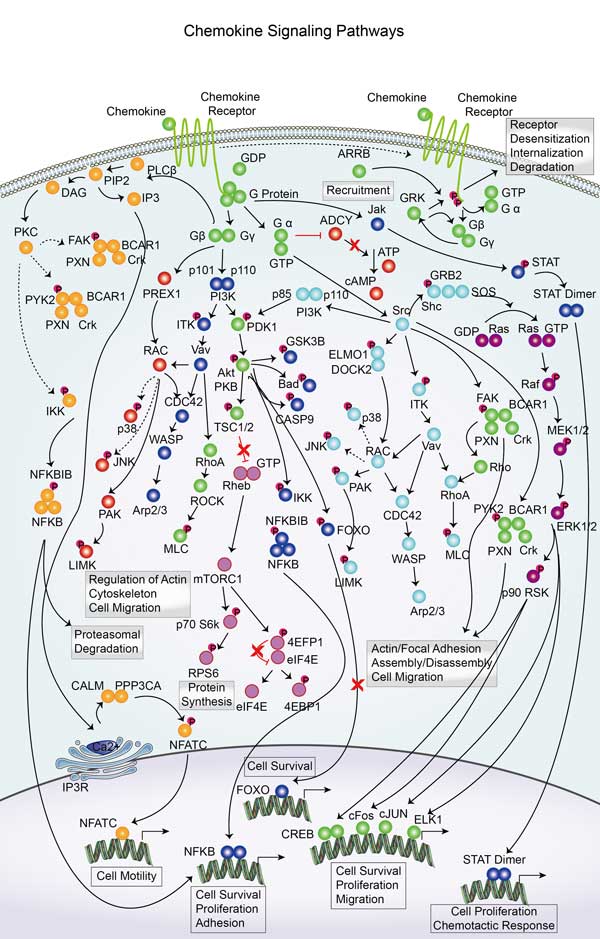ADCY9
-
Official Full Name
adenylate cyclase 9 -
Overview
Adenylate cyclase is a membrane bound enzyme that catalyses the formation of cyclic AMP from ATP. It is regulated by a family of G protein-coupled receptors, protein kinases, and calcium. The type 9 adenylyl cyclase is a widely distributed adenylyl cyclase, and it is stimulated by beta-adrenergic receptor activation but is insensitive to forskolin, calcium, and somatostatin. -
Synonyms
ADCY9;adenylate cyclase 9;adenylate cyclase type 9;AC9;ADCY 9;Adenylate cyclase type IX;Adenylyl cyclase 9;ATP pyrophosphate lyase 9;KIAA0520;Type IX adenylyl cyclase;Type IX ATP pyrophosphate lyase;ATP pyrophosphate-lyase 9;type IX ATP pyrophosphate-lyase
Recombinant Proteins
- Human
- Mouse
- Chicken
- E.coli
- Mammalian Cells
- E.Coli/Yeast
- HEK293
- His
- T7
- GST
- Avi
- Fc
| Cat.# | Product name | Source (Host) | Species | Tag | Protein Length | Price |
|---|---|---|---|---|---|---|
| ADCY9-9411H | Recombinant Human ADCY9, His-tagged | E.coli | Human | His | 490-787a.a. | |
| ADCY9-1347M | Recombinant Mouse ADCY9 Protein | Mammalian Cells | Mouse | His |
|
|
| ADCY9-3168H | Recombinant Human ADCY9, His-tagged, T7 tagged | E.coli | Human | His&T7 | 1353 |
|
| Adcy9-3183M | Recombinant Mouse Adcy9, His-tagged | E.Coli/Yeast | Mouse | His | 1353 |
|
| ADCY9-6198C | Recombinant Chicken ADCY9 | Mammalian Cells | Chicken | His |
|
|
| ADCY9-635H | Recombinant Human ADCY9 | Mammalian Cells | Human | His |
|
|
| Adcy9-6944M | Recombinant Mouse Adcy9 protein, His & GST-tagged | E.coli | Mouse | GST&His | Thr852~Val1065 |
|
| ADCY9-0477H | Recombinant Human ADCY9 Protein (Asp1029-Val1282), N-His-tagged | E.coli | Human | His | Asp1029-Val1282 |
|
| ADCY9-2432H | Recombinant Human ADCY9 Protein, His (Fc)-Avi-tagged | HEK293 | Human | Avi&Fc&His |
|
|
| ADCY9-2432H-B | Recombinant Human ADCY9 Protein Pre-coupled Magnetic Beads | HEK293 | Human |
|
||
| ADCY9-338M | Recombinant Mouse ADCY9 Protein, His (Fc)-Avi-tagged | HEK293 | Mouse | Avi&Fc&His |
|
|
| ADCY9-338M-B | Recombinant Mouse ADCY9 Protein Pre-coupled Magnetic Beads | HEK293 | Mouse |
|
Involved Pathway
ADCY9 involved in several pathways and played different roles in them. We selected most pathways ADCY9 participated on our site, such as Activation of GABAB receptors,Adenylate cyclase activating pathway,Adenylate cyclase inhibitory pathway, which may be useful for your reference. Also, other proteins which involved in the same pathway with ADCY9 were listed below. Creative BioMart supplied nearly all the proteins listed, you can search them on our site.
| Pathway Name | Pathway Related Protein |
|---|---|
| Bile secretion | NR0B2,ATP1A1,OSTA,SLC22A7,EPHX1,CFTR,Abcb1b,PRKACB,SCARB1,BAAT |
| Aldosterone synthesis and secretion | PRKD3,ADCY6,PRKACA,CAMK2D,ADCY8,CYP21A2,CREB3L3,PLCB1,CALML5,HSD3B6 |
| Adrenergic signaling in cardiomyocytes | PPP2R1B,CACNG7,ADRB3A,ATP2B3B,ATF6B,SCN5A,ADRB2A,PRKACBA,MAPK3,PPP2R2C |
| Activation of GABAB receptors | KCNJ2,KCNJ15,GNB3B,KCNJ3,ADCY3,ADCY1,KCNJ6,GNB3A,KCNJ12,KCNJ4 |
| Aquaporin-mediated transport | MIPB,ADCY8,AQP10A,ADCY6,AQP3B,MIP,MYO5B,GNB3B,PRKAR1AA,AQP1A.1 |
| Adenylate cyclase activating pathway | ADCY6,ADCY7,ADCY1,ADCY3,ADCY8 |
| Adenylate cyclase inhibitory pathway | ADCY3,ADCY8,ADCY1,ADCY7,ADCY6 |
| Ca-dependent events | ADCY7,PRKAR1AA,ADRBK1 |
Protein Function
ADCY9 has several biochemical functions, for example, ATP binding,adenylate cyclase activity,metal ion binding. Some of the functions are cooperated with other proteins, some of the functions could acted by ADCY9 itself. We selected most functions ADCY9 had, and list some proteins which have the same functions with ADCY9. You can find most of the proteins on our site.
| Function | Related Protein |
|---|---|
| adenylate cyclase activity | ADCY6,ADCY7,ADCY8,ADCY1,Adcy4,ADCY1B,ADCY1A,GNAS,ADCY2B,ADCY3 |
| metal ion binding | HSPG2,ZDHHC15B,NOS2B,ZFP280D,RPP21,IKZF4,NRP1,TGM1,HEPHL1,ADAM25 |
| ATP binding | CDKL2,DGKAA,YSK4,ATP6AP1,DAK,DHX36,ABCG2D,DYRK1B,PNKP,ABCC8 |
Interacting Protein
ADCY9 has direct interactions with proteins and molecules. Those interactions were detected by several methods such as yeast two hybrid, co-IP, pull-down and so on. We selected proteins and molecules interacted with ADCY9 here. Most of them are supplied by our site. Hope this information will be useful for your research of ADCY9.
HSPB1
ADCY9 Related Signal Pathway
Resources
Related Services
Related Products
References




